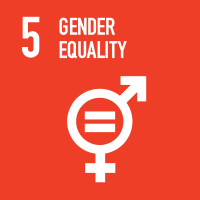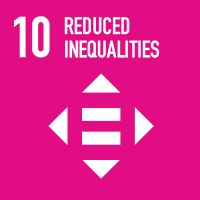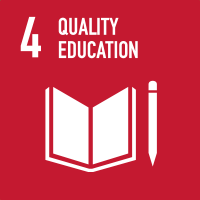Studying at the University of Verona
Here you can find information on the organisational aspects of the Programme, lecture timetables, learning activities and useful contact details for your time at the University, from enrolment to graduation.
Study Plan
This information is intended exclusively for students already enrolled in this course.If you are a new student interested in enrolling, you can find information about the course of study on the course page:
Laurea in Lettere - Enrollment from 2025/2026The Study Plan includes all modules, teaching and learning activities that each student will need to undertake during their time at the University.
Please select your Study Plan based on your enrollment year.
1° Year
| Modules | Credits | TAF | SSD |
|---|
1 MODULE AMONG THE FOLLOWING2° Year activated in the A.Y. 2022/2023
| Modules | Credits | TAF | SSD |
|---|
Latin literature (i)
2 MODULES AMONG THE FOLLOWING2 MODULES AMONG THE FOLLOWING1 MODULE AMONG THE FOLLOWING3° Year activated in the A.Y. 2023/2024
| Modules | Credits | TAF | SSD |
|---|
2 MODULES AMONG THE FOLLOWING1 MODULE AMONG THE FOLLOWING1 MODULE AMONG THE FOLLOWING| Modules | Credits | TAF | SSD |
|---|
1 MODULE AMONG THE FOLLOWING| Modules | Credits | TAF | SSD |
|---|
Latin literature (i)
2 MODULES AMONG THE FOLLOWING2 MODULES AMONG THE FOLLOWING1 MODULE AMONG THE FOLLOWING| Modules | Credits | TAF | SSD |
|---|
2 MODULES AMONG THE FOLLOWING1 MODULE AMONG THE FOLLOWING1 MODULE AMONG THE FOLLOWING| Modules | Credits | TAF | SSD |
|---|
Legend | Type of training activity (TTA)
TAF (Type of Educational Activity) All courses and activities are classified into different types of educational activities, indicated by a letter.
Spanish literature (i) (2023/2024)
Teaching code
4S01446
Teacher
Coordinator
Credits
6
Language
Italian
Scientific Disciplinary Sector (SSD)
L-LIN/05 - SPANISH LITERATURE
Period
CuCi 2 A, CuCi 2 B
Courses Single
Authorized
Learning objectives
The main objective of the course is the acquisition of advanced skills in the field of Spanish contemporary literature.
Prerequisites and basic notions
No prerequisites required.
Program
«Hay que seguir el camino de la sangre»: declinations of violence in Spanish literature between the nineteenth and twentieth centuries.
The course will provide the coordinates for the knowledge of the main movements, authors and genres of Spanish literature between the nineteenth and twentieth centuries, focusing in particular on the declinations of violence and conflict in different historical-social contexts and distinct literary forms (novel, short story, poetry, theatre). Parallel to the presentation of the historical-cultural context (the First Republic, the crisis of '98, the dictatorship of Primo de Rivera, the Second Republic, the dictatorship of Franco) and the main literary movements (Realism, Modernism, the Avant-garde, the Generation of '27), an in-depth study of fundamental texts of the period is envisaged with particular attention to the female figure and the links with expressive forms such as painting and cinema.
The program is divided into three parts:
Part I: Prose Violence and the condition of women in turn-of-the-century literature
Emilia Pardo Bazán, “Il pizzo strappato”, 1886 (two texts chosen by the student)
Benito Pérez Galdós, “Tristana” , 1892 (full reading)
Part II: Poetry Poetic voices between Modernism and the Avant-garde at the dawn of the Civil War (an anthological choice by the teacher)
Part III: Theater Paths of eroticism and violence in Lorca's dramatic work
Federico García Lorca , “Blood Wedding”, 1933 (full reading)
It is planned to accompany the study of the texts with partial screenings of cinematographic works (“Tristana”, 1970, by Luis Buñuel; “La novia”, 2015, by Paula Ortiz).
A detailed summary of the topics covered, together with the complete calendar of teaching activities, will be indicated at the beginning of the course. The history of literature manuals and the scheduled texts will be indicated by the teacher and available at the University Libraries.
Bibliography
Didactic methods
Teaching will be held in Italian through frontal teaching and case studies. The teaching will also be active on the university's e-learning platform, where some mandatory content and optional in-depth materials will be uploaded. This program is also valid for non-attending students, who, however, are advised to contact the teacher during office hours. An individual reception service managed by the teacher is available throughout the academic year, at the times indicated on the web pages (without the need to make a specific appointment) and constantly updated. Students who find themselves in the position of having to make up for missed lessons will be able to contact the teacher.
Learning assessment procedures
The exam takes place orally in Italian and consists of an interview aimed at verifying the depth and breadth of the knowledge acquired, the analytical and argumentative ability, and the ownership of language. The topics being tested concern the entire program.
Evaluation criteria
The depth and breadth of the knowledge gained, the analytical and argumentative ability, the ability to connect the different topics covered in the course, the ownership of language, the clarity of presentation will be evaluated.
Criteria for the composition of the final grade
The final grade will be that resulting from the oral interview as a whole and will be expressed out of thirty.
Exam language
Italiano



